Butterflies are one of the most looked for insects in the landscape, Their colors and flight patterns are observed by amateurs, professionals, and children alike. Everyone loves butterflies.
I have a number of field guides for butterflies and for caterpillars, but none that show both caterpillars and butterflies together. There is a decided lack of information match-up here. So I have combined 14 species of butterflies and their caterpillars into this post.
Why are butterflies important?
Butterflies, moths, and their caterpillars are an integral part of the landscape. Without them, be would certainly have almost no bird species, since most birds rear their young on caterpillars. My favorite bird, the black-capped chickadee is no exception. All insects play an important role in the health of an ecosystem.
Butterflies and their caterpillars

The black swallowtail butterfly is very common in our area. We often find the caterpillars feeding on our herb gardens among the parsley, dill, and carrots. It also likes the native Golden Alexanders, Zizia aurea. The black swallowtail butterfly overwinters inside a chrysalis, attached to plant stems or walls, within 3 feet of the ground.
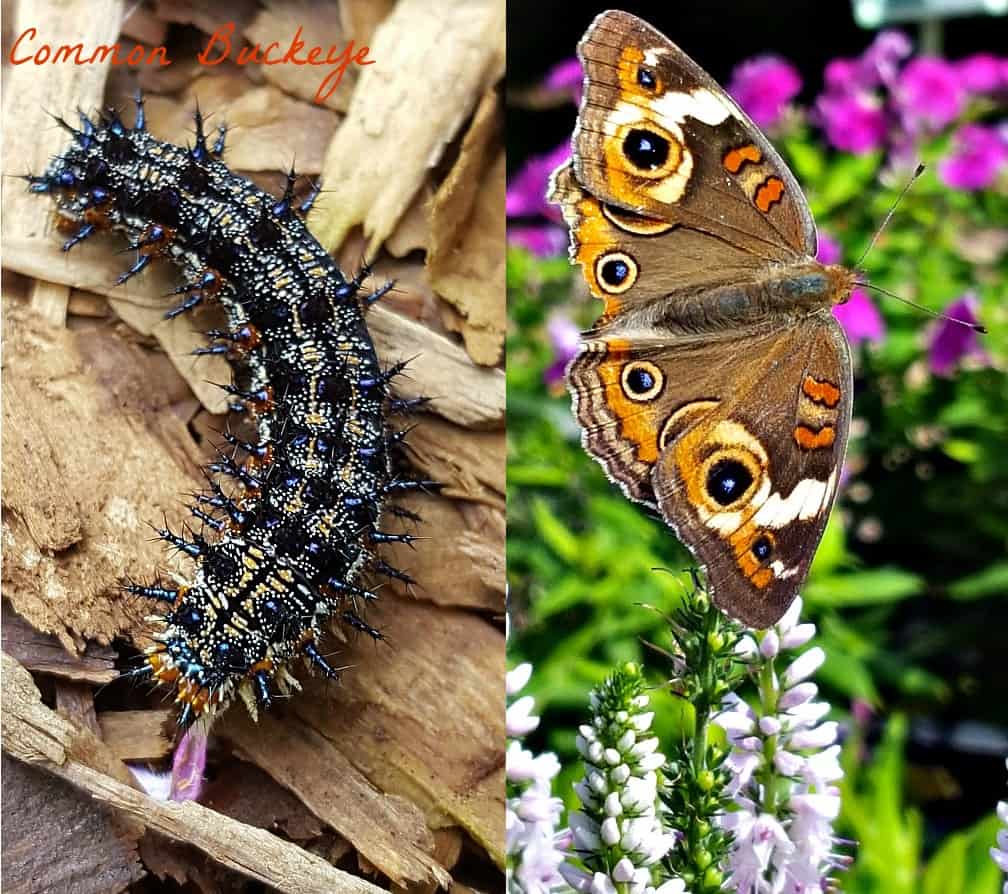
Common buckeyes are often seen more in fall as the butterflies love to feed on tall sedums, such as Autumn Joy or Autumn Fire. This is because they are migrating southward, to overwinter as adults in the Deep South. The caterpillars eat various plantains, native verbenas, and members of the scrophulariaceae family, including snapdragons and Maryland Figwort, Scrophularia marilandica.
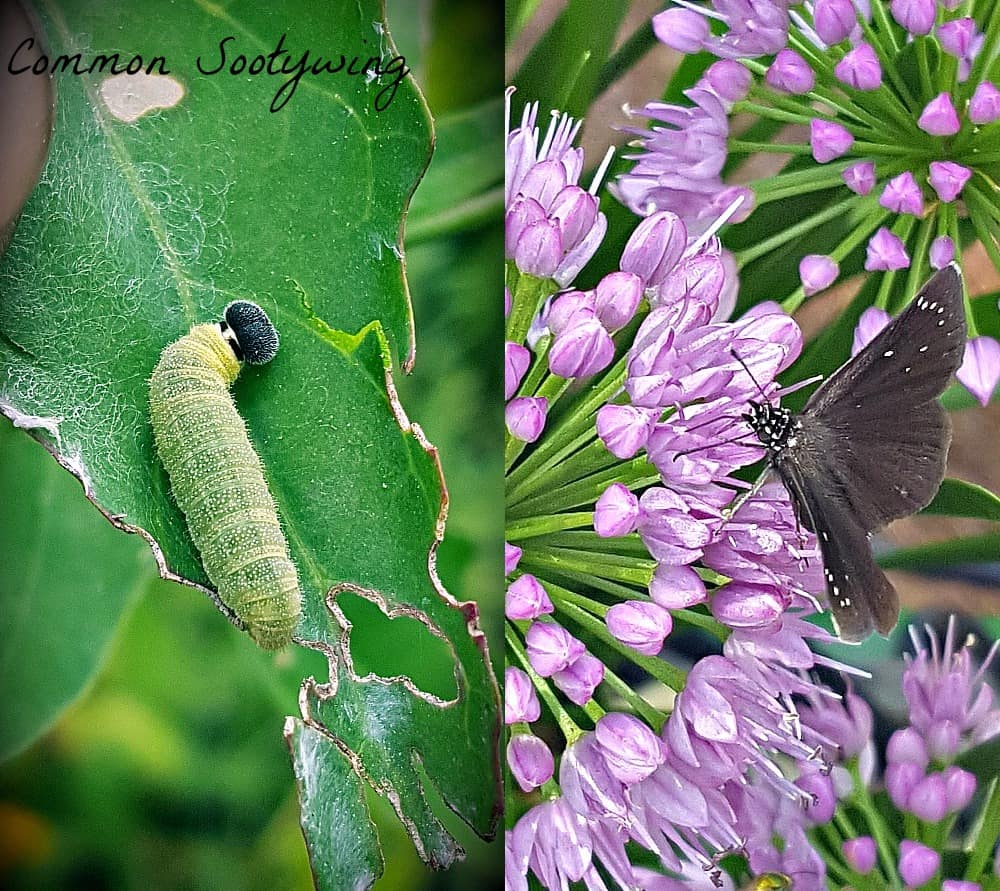
The common sootywing butterfly may not be as often seen to butterfly watchers as they are not as showy as other butterflies, but they are an important part of the ecosystem. Their caterpillars feed on native ragweeds, pigweeds, celosia, beets, and chard. Above, the caterpillar is feasting on lamsquarters, a common agricultural weed. They overwinter as caterpillars in silk-lined nests or inside of seedpods.
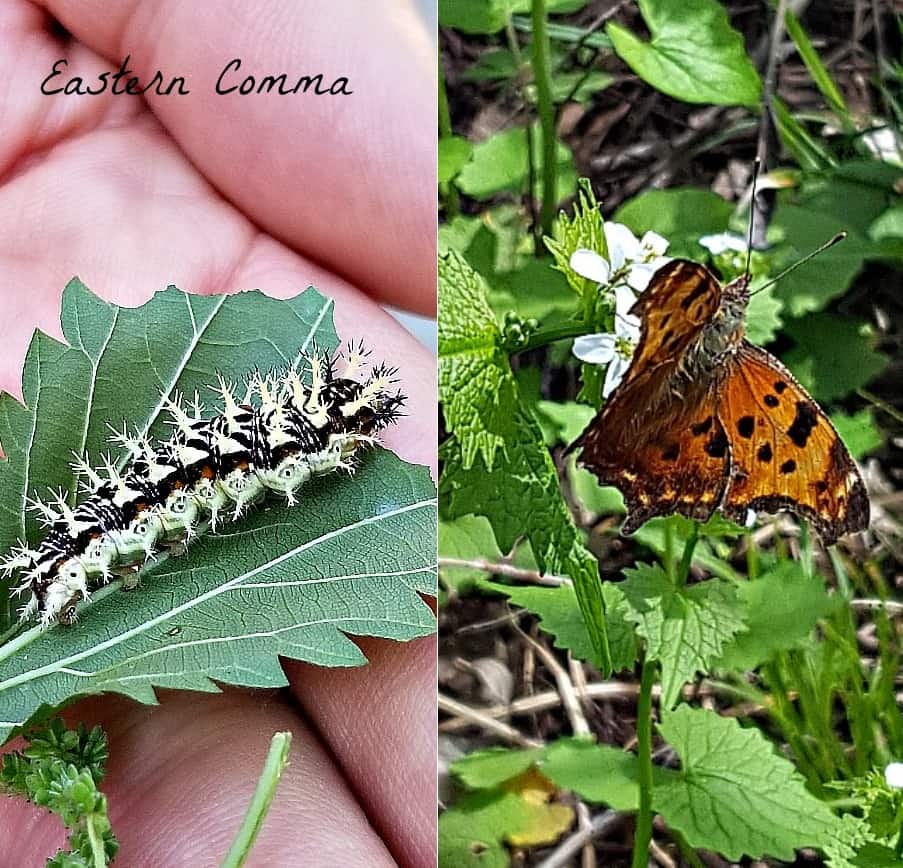
The eastern comma butterfly is one of my favorite to find, along with the question mark butterfly, as they both look like leaves on a stick when they are at rest with their wings folded. The caterpillars of the comma feed on leaves of various nettles and hops. I see these butterflies in the woods in early spring on warm days, because they overwinter as adults under bark or leaves.
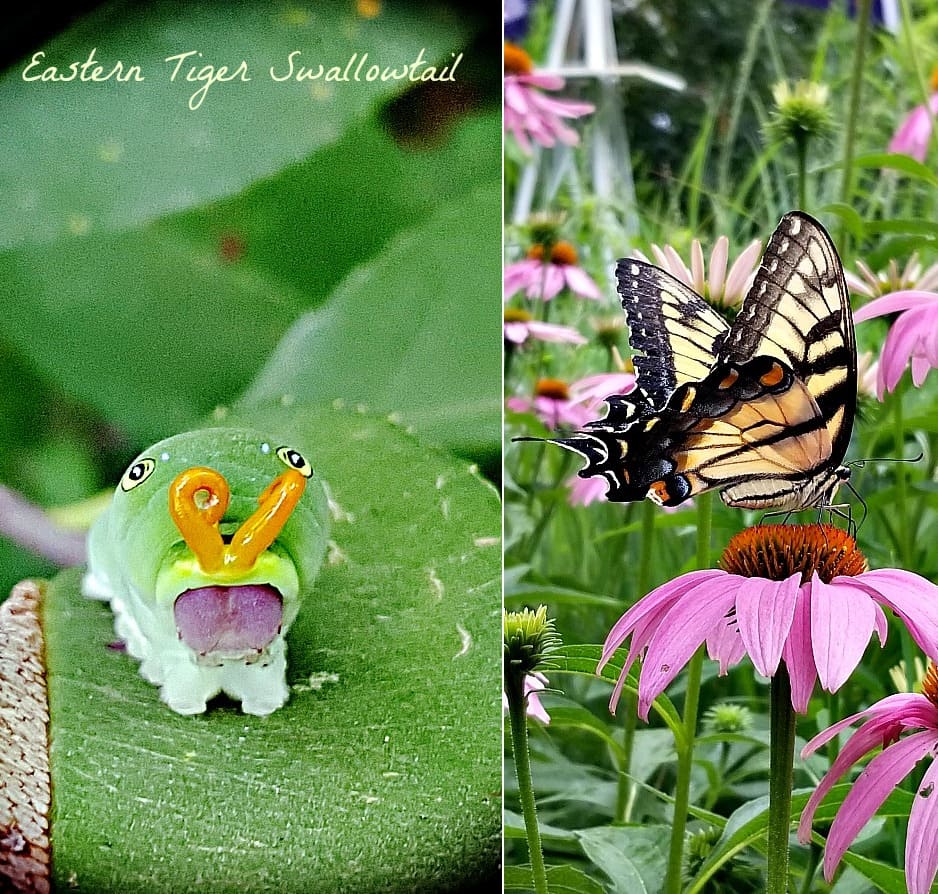
I finally discovered my first eastern tiger swallowtail caterpillar 2 years ago in the woods near Mission Lake, Horton. They are so much fun to watch. Their caterpillars feed on a variety of trees, including black cherry, ash, tuliptree, apple, wafer ash (Ptelea trifoliata), spicebush, and magnolias. They overwinter as a chrysalis among trees that they feed on.
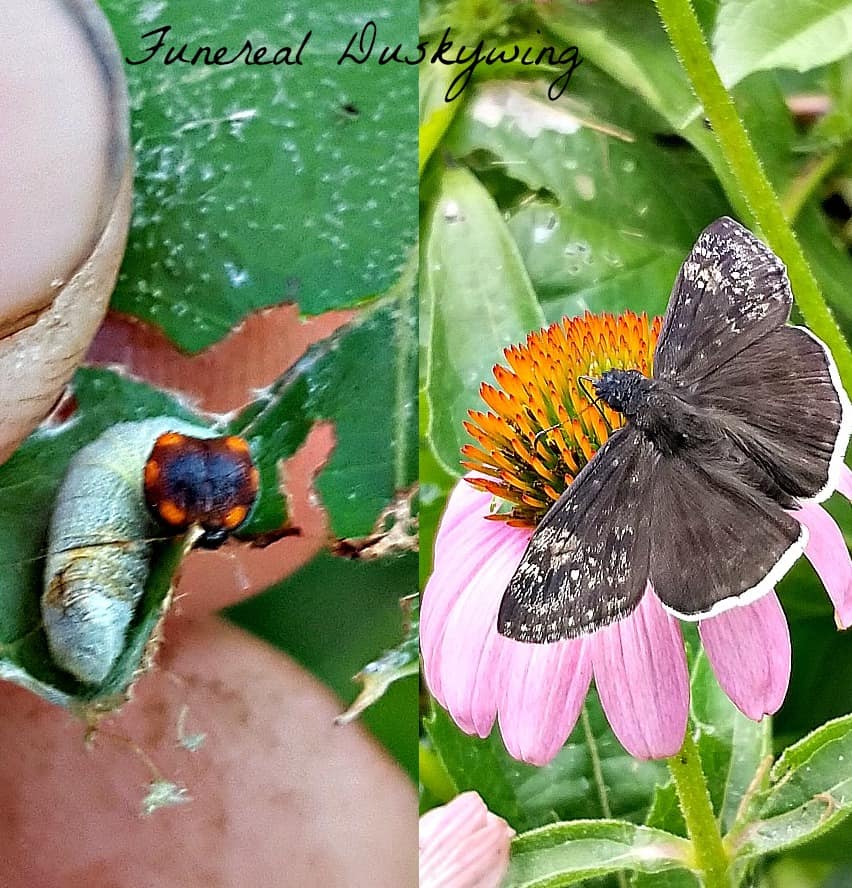
The funereal duskywing is not a common sight in our area, but in some years, you may find many of them. 2019 was a good year for me, I located them in 4 counties and varying habitats in Northeast Kansas. Caterpillars feed on various legumes, including wild alfalfa, baptisia, and black medic. The last brood of caterpillars overwinter inside leaf nests and pupate in the spring.
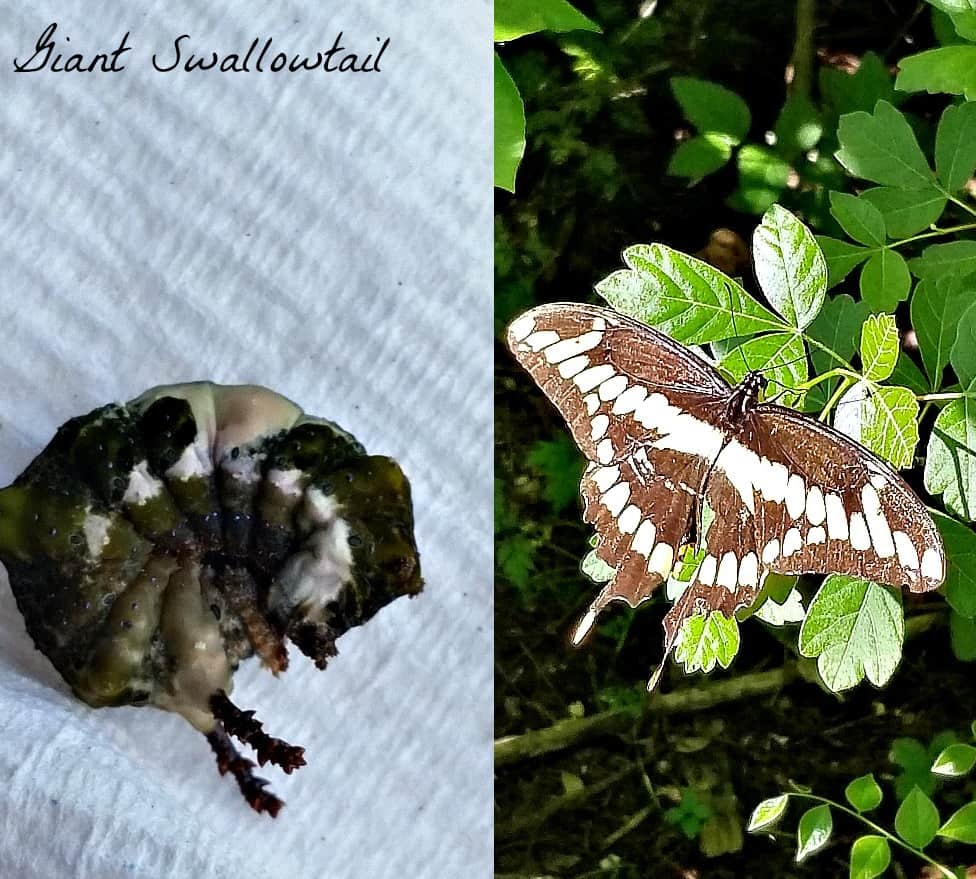
The giant swallowtail butterfly is often confused with the black swallowtail but is still a common sight in gardens that are near its host plants. Caterpillars prefer members of the citrus family, including Prickly-Ash (Zanthoxylum americanum) near me, or others such as hardy orange, wafer ash, and rue. They only overwinter in the Deep South, as adults.
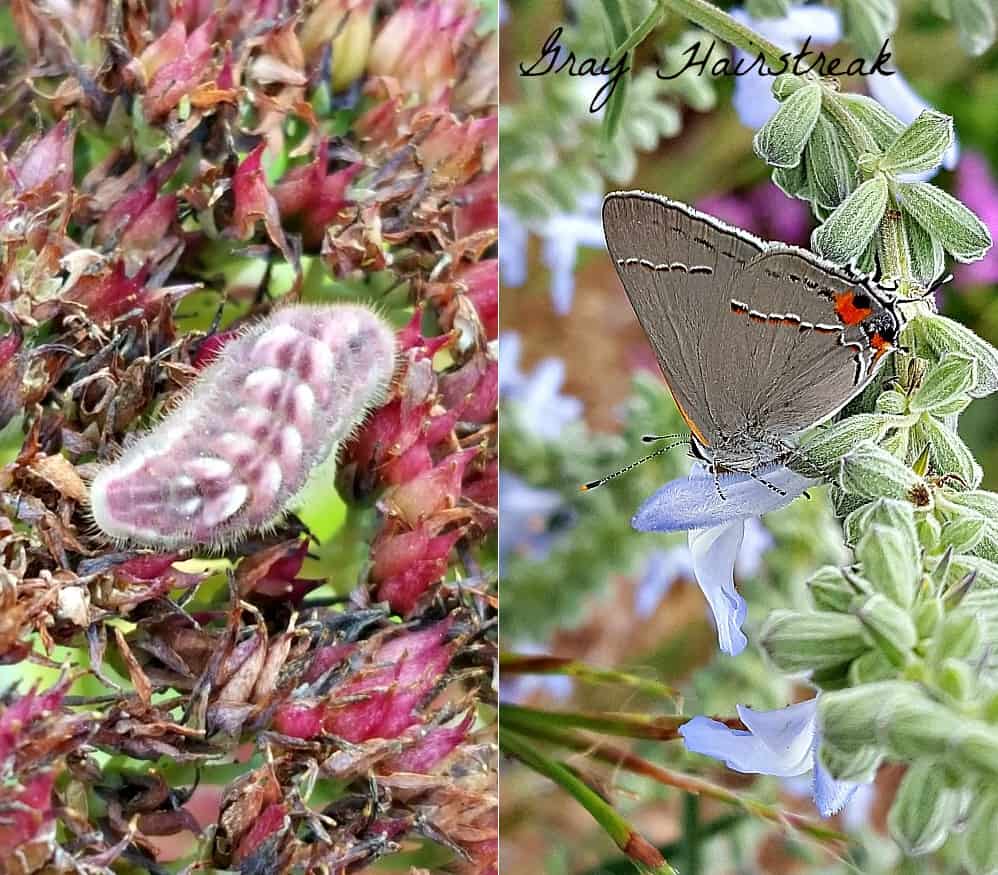
The gray hairstreak butterfly is perhaps the most commonly seen of the many hairstreak butterflies we have. They are also larger than most of the others. The caterpillars feed on a wide variety of flowers and fruits including corn, oak, strawberry, mint, sedum, legumes, and mallows. They overwinter as in the chrysalis form in plant debris.
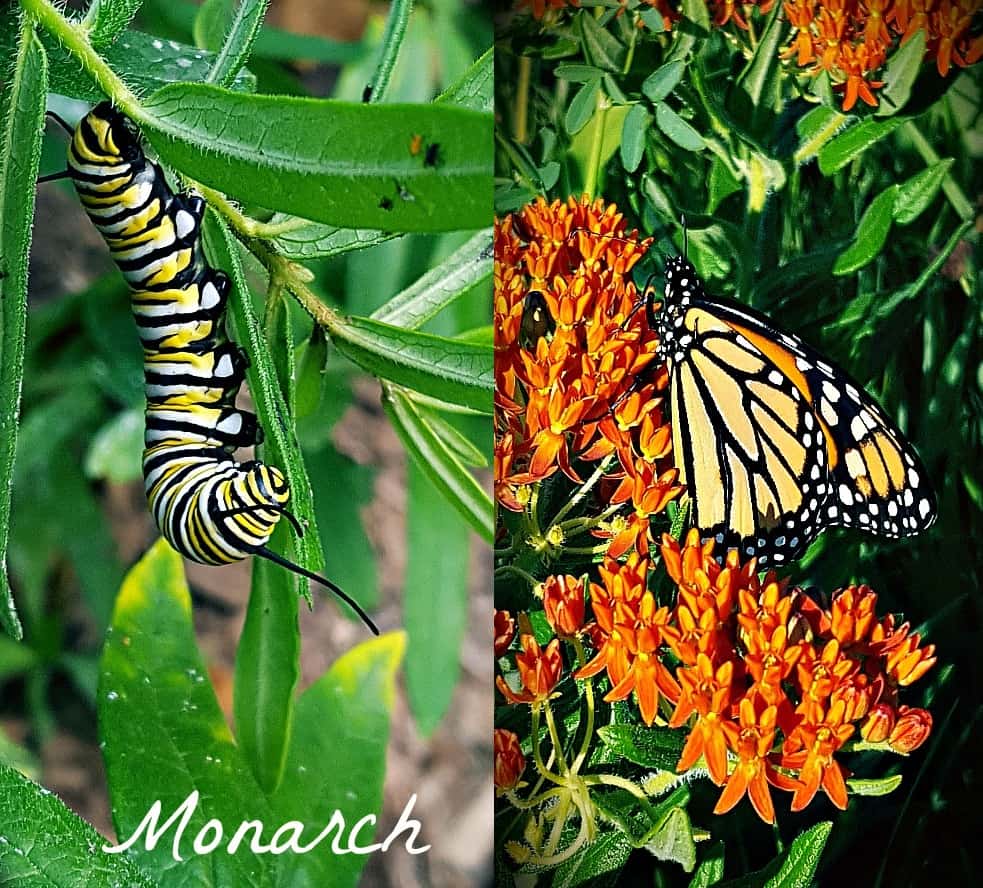
Everyone talks about the monarch butterfly and its dependence on habitat restoration and the migration southward. I think this is Kansas’s second most beautiful butterfly (after the Regal Fritillary). Of course, monarchs feed on members of the milkweed family, including butterfly weed, climbing milkweeds, and a few tropical milkweeds, plus the rest of the Asclepias genera. Monarchs overwinter in Mexico, Florida, and California, as adults.
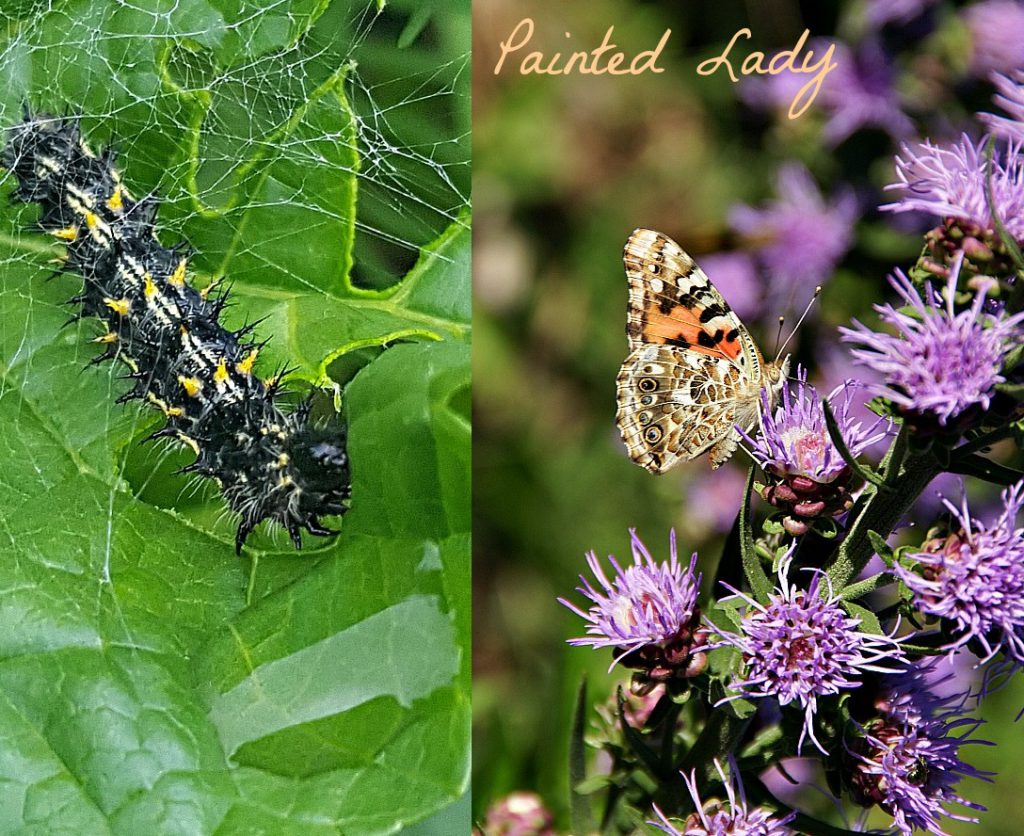
The painted lady butterfly can have banner years or down years, depending on food source and migration patterns. 2019 was a normal year for this butterfly, and I found it regularly along with many sulphur butterflies. Caterpillars feed on members of the thistle family, including the native tall thistle (above), Cirsium altissimum. They overwinter as adults in the Deep South.
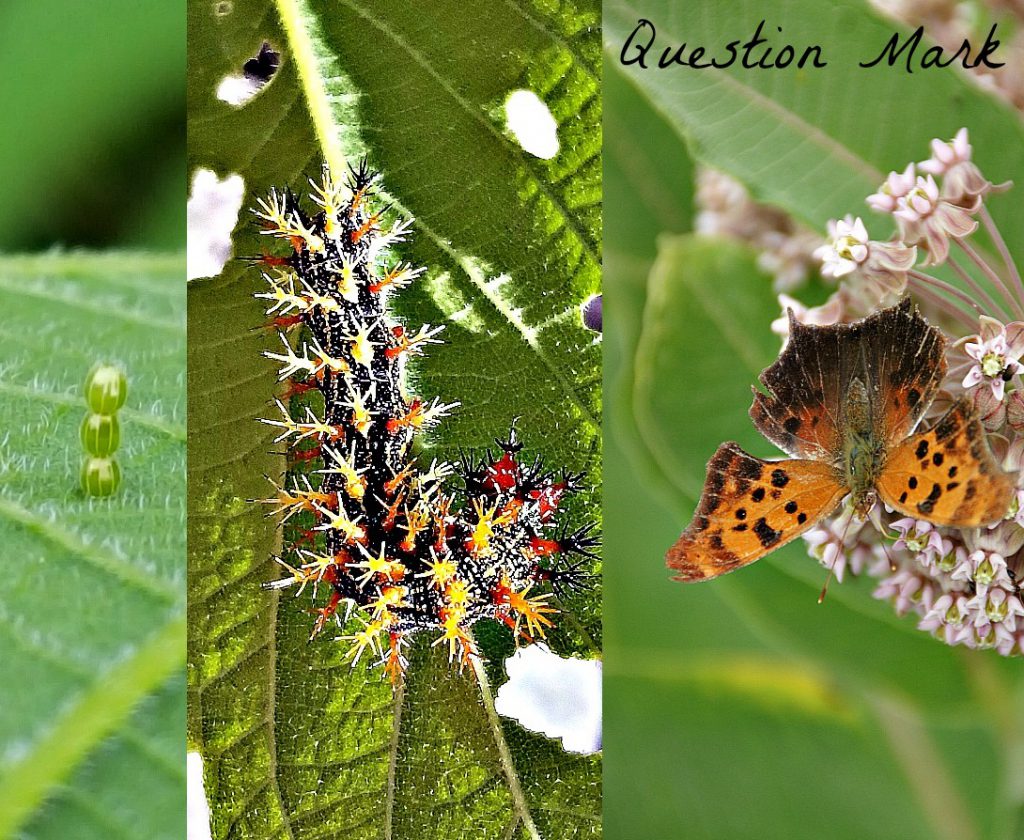
The question mark butterfly is another one of those who at rest, appear to be leaves on a tree. The caterpillars are quite showy and can be found eating on leaves of native elms and hackberry. Eggs (above) are stacked like little barrels on the underside of the leaf. The adults overwinter in leaf debris and under bark, throughout their range.
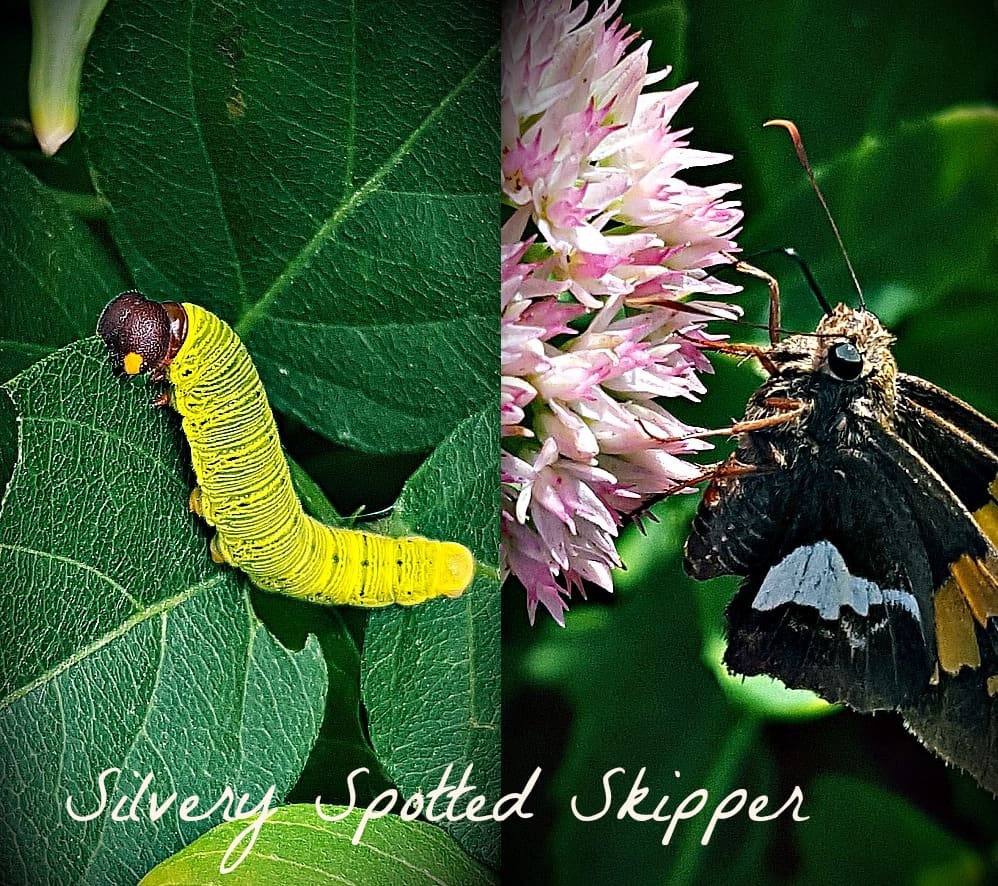
The silvery spotted skipper is the easiest skipper to identify as it is quite large among the others. The caterpillars feed on legumes such as baptisia, black locust (Robinia), honeylocust, wild senna, and wisteria. They overwinter as pupa inside their leaf nests.
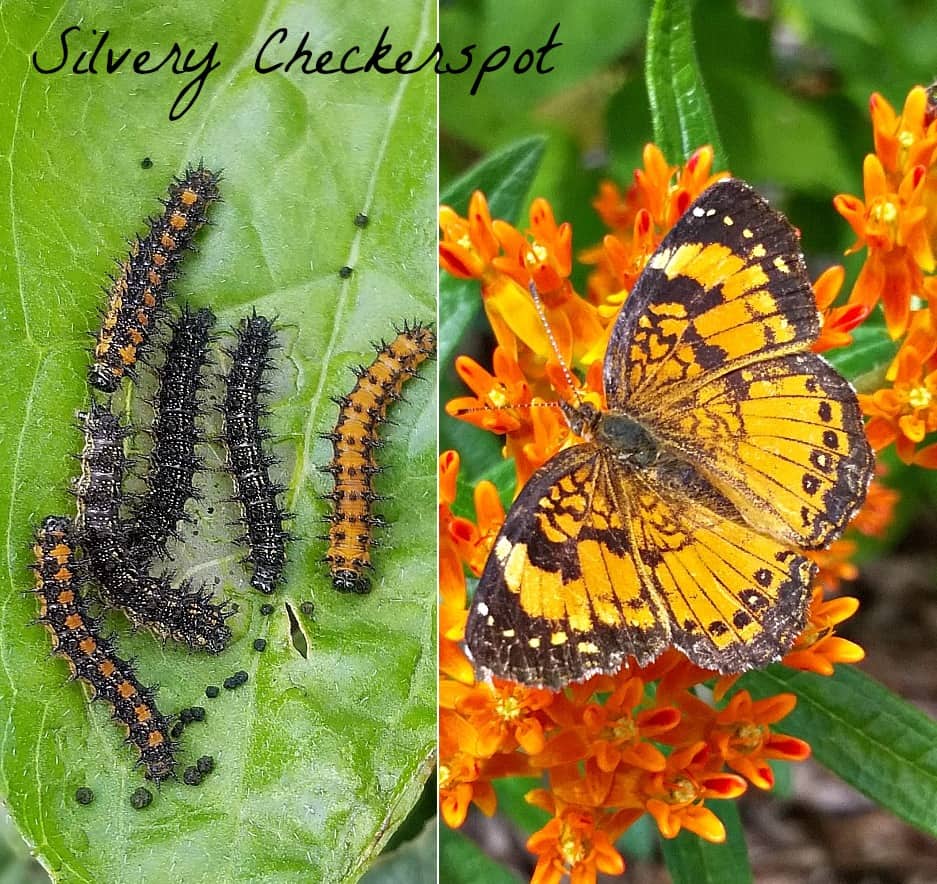
The silvery checkerspot butterfly is almost like a miniature version of the monarch with its orange and black markings. The caterpillars too use these color markings to help deter predators. Host plants for these butterflies are members of the asteraceae family including echinaceas, rudbeckias, sunflowers, and wingstem (Verbesina). They overwinter as pupa inside the chrysalis.
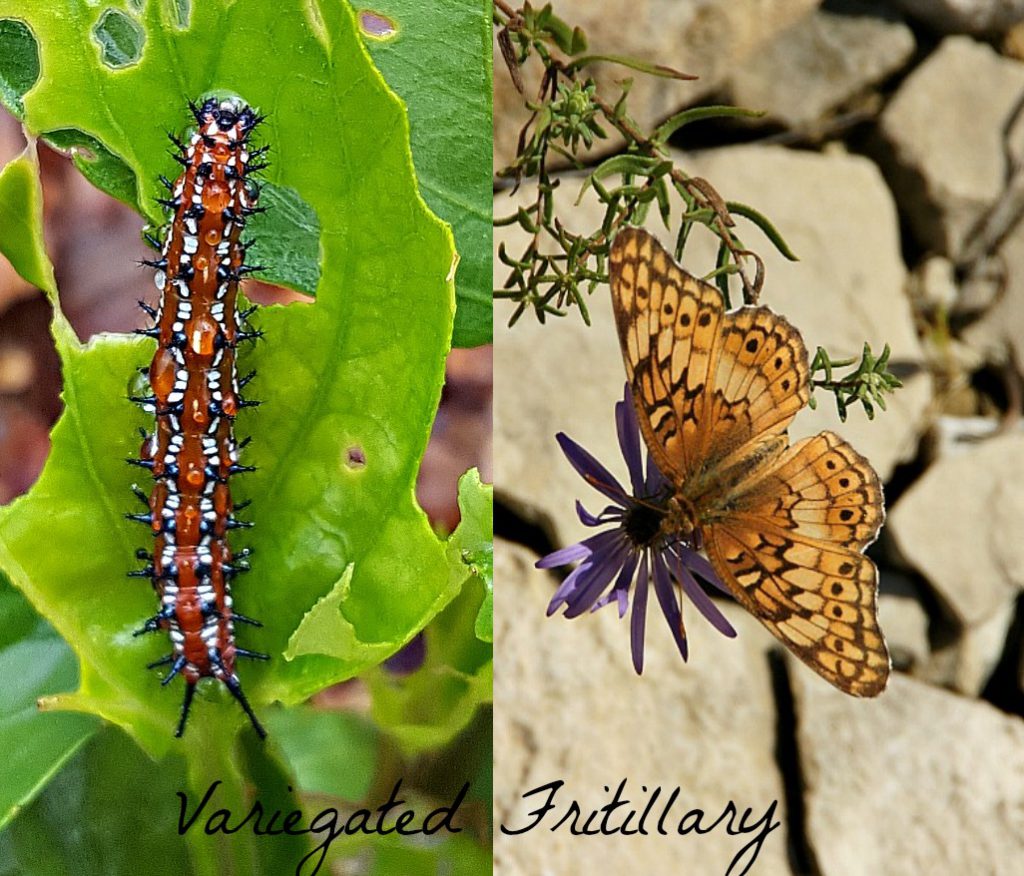
The variegated fritillary is the only fritillary I have a caterpillar photo for. I hope to remedy that in 2020. The regal fritillary is our prettiest butterfly and I will be searching for caterpillars. However, the variegated fritillary is very common, as the caterpillars feed on wild violets, which are common in prairies as well as landscapes and forests. They overwinter as adults in the Deep South.





Love this page with our Kansas fall butterflies! We have so many pretty ones in West Lawrence. It’s a delight to take a walk before first frost.
I believe that the best idea is to start selling flower seed packages at nurseries all around the country and call them Pot of Gold Seeds. All they have be is Milkweed seeds.